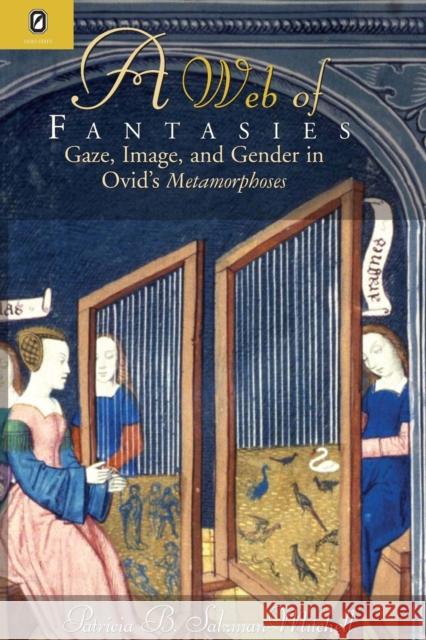Web of Fantasies: Gaze, Image, & Gender in Ovid's Metamorphoses » książka
Web of Fantasies: Gaze, Image, & Gender in Ovid's Metamorphoses
ISBN-13: 9780814253687 / Angielski / Miękka / 2016 / 272 str.
Drawing on recent scholarship in art, film, literary theory, and gender studies, "A Web of Fantasies" examines the complexities, symbolism and interactions between gaze and image in Ovid's "Metamorphoses" and forms a gender-sensitive perspective. It is a feminist study of Ovid's epic, which includes many stories about change, in which discussions of viewers, viewing, and imagery strive to illuminate Ovid's constructions of male and female. Patricia Salzman-Mitchell discusses the text from the perspective of three types of gazes: of characters looking, of the poet who narrates visually charged stories, and of the reader who "sees" the woven images in the text. Arguing against certain theorists who deny the possibility of any feminine vision in a male-authored poem, the author maintains that the female point of view can be released through the traditional feminine occupation of weaving, featuring the woven images of Arachne (involved in a weaving contest in which she tried to best the goddess Athena, who turned her into a spider) and Philomela (who had her tongue cut out, so had to weave a tapestry depicting her rape and mutilation). The book observes that while feminist models of the gaze can create productive readings of the poem, these models are too limited and reductive for such a protean and complex text as "Metamorphoses." This work brings forth the pervasive importance of the act of looking in the poem which will affect future readings of Ovid's epic. Patricia B. Salzman-Mitchell is assistant professor of classics, department of classics and general humanities at Montclair State University, Montclair, New Jersey.
Drawing on recent scholarship in art, film, literary theory, and gender studies, A Web of Fantasies examines the complexities, symbolism and interactions between gaze and image in Ovids Metamorphoses and forms a gender-sensitive perspective. It is a feminist study of Ovids epic, which includes many stories about change, in which discussions of viewers, viewing, and imagery strive to illuminate Ovids constructions of male and female. Patricia Salzman-Mitchell discusses the text from the perspective of three types of gazes: of characters looking, of the poet who narrates visually charged stories, and of the reader who "sees" the woven images in the text. Arguing against certain theorists who deny the possibility of any feminine vision in a male-authored poem, the author maintains that the female point of view can be released through the traditional feminine occupation of weaving, featuring the woven images of Arachne (involved in a weaving contest in which she tried to best the goddess Athena, who turned her into a spider) and Philomela (who had her tongue cut out, so had to weave a tapestry depicting her rape and mutilation).The book observes that while feminist models of the gaze can create productive readings of the poem, these models are too limited and reductive for such a protean and complex text as Metamorphoses. This work brings forth the pervasive importance of the act of looking in the poem which will affect future readings of Ovids epic.Patricia B. Salzman-Mitchell is assistant professor of classics, department of classics and general humanities at Montclair State University, Montclair, New Jersey.











